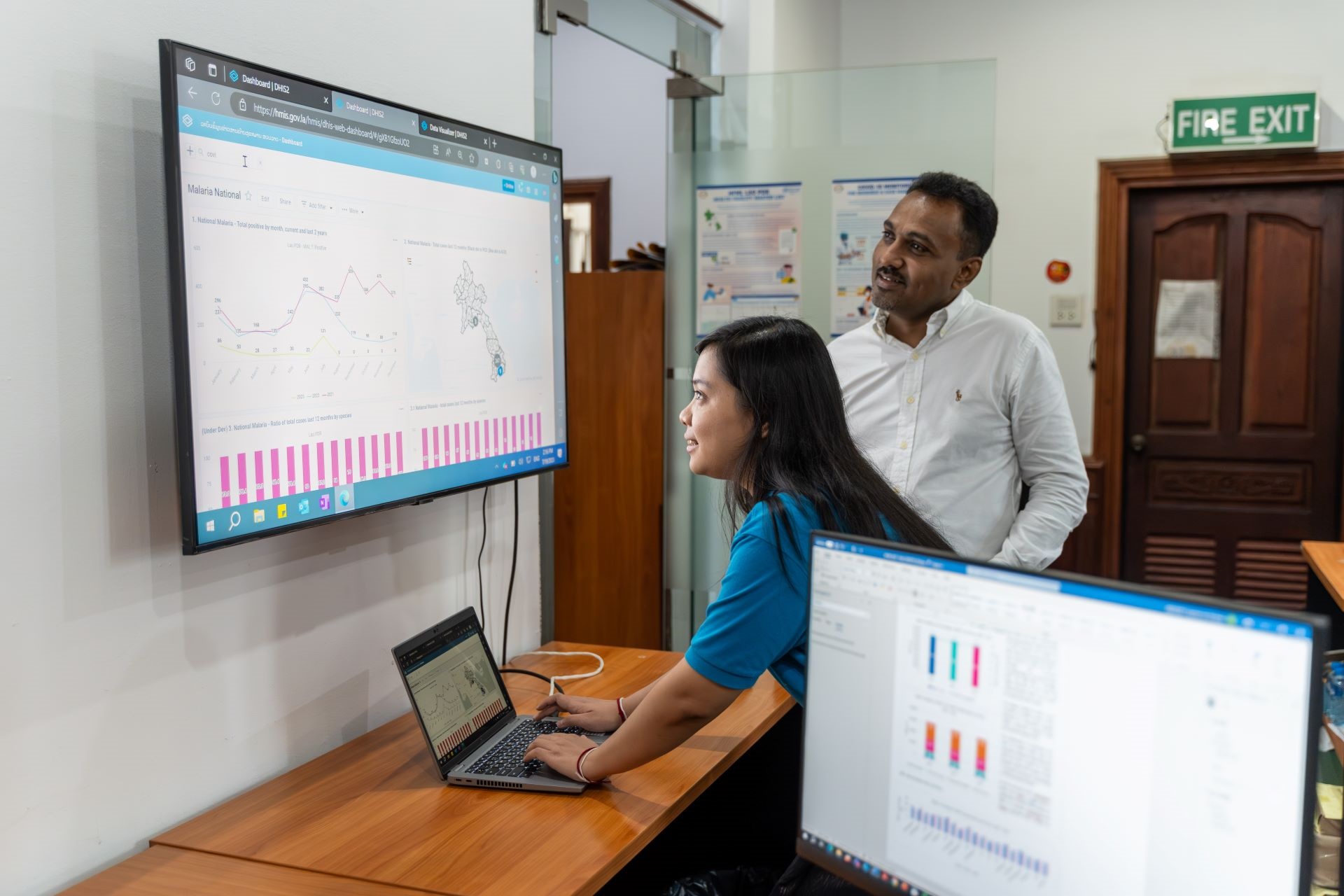
A WHO staff member accesses provincial health data from Lao PDR.
Responsive and reliable health information systems (HIS) are foundational for producing evidence for good public health decisions, and ensuring effective and efficient service delivery. They allow the Ministry of Health and development partners to make informed decisions on where investments are needed most and to monitor progress – but require long-term investment, strategic vision and standards and tools.
Prior to 2013, Lao PDR’s HIS was fragmented. Key programmes had siloed information systems supported by a range of partners. Simple offline applications were used to maintain and analyse data. Transmitting and sharing data was cumbersome, with health-care workers having to report on multiple platforms and often duplicating efforts and consolidation at a national level.
Data security issues were a concern while development and maintenance costs were high and at various levels of maturity – mostly reliant on external funding. Maintaining this would have required diverse expertise by the Ministry of Health’s Health Information Unit.
Addressing this, WHO technical assistance led to the selection and introduction of an integrated HIS solution for the national Health Management Information System – the District Health Information Software version 2 (DHIS2), an open source, web-based platform – making Lao PDR’s HIS unique and progressive.
With continuous, dedicated technical support provided by WHO, the system has evolved to become highly agile. Now, it is capable of rapidly identifying and responding to emerging health threats (such as COVID-19) by tracking surveillance data with minimum effort and resources.

Two WHO staff members review maternal health data.
Results
Through sustained technical support and over a decade of investment, WHO has spearheaded support in building a responsive, integrated HIS. Key results include:
- Development and ongoing implementation of Lao PDR’s first Digital Health Strategy in 2023, outlining governance, workforce, standards, application and infrastructure plans to enable coordinated progress and support.
- Regular use of Ministry of Health/WHO-developed evidence and trends relating to service utilization is driving development partner and sector technical discussions on continuous service delivery improvements, and attracting more targeted investment.
- Health service delivery reform consultations with central, provincial and district authorities is now driven through evidence – i.e. mapping service gaps against human resource allocation – generated via multisource data and geospatial analyses.
- The Ministry of Home Affairs, with WHO support, is strengthening Civil Registration and Vital Statistics by deploying a system to capture death notification data from village chiefs across all villages in Vientiane Capital. The system is yielding more mortality related data than ever seen before, allowing response to trends, and better medical mortality certification.
Lao PDR is innovating in climate change and health, merging meteorological and climate data within its HIS, and piloting an early warning system for climate-sensitive diseases.
Our partners
The Global Fund
Gavi
The Government of the Republic of Korea
The Government of the United States of America through the Centers for Disease Control and Prevention (CDC) and USAID
UHC2030

